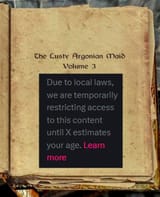>>515156580 (OP)
European royalty and nobility historically used marriage for strategic alliances and to consolidate power, wealth, and land, often involving endogamy (marrying within the group) and primogeniture (eldest son inherits) to maintain lineage. Marriages were typically arranged, often at a young age, with less emphasis on romantic love and more on securing the family's prestige and future through suitable partners and ensuring the birth of heirs. Over time, particularly in modern eras, there has been an increasing acceptance of royal marriages to commoners, sometimes driven by romantic feelings or a desire to connect with the public.
Key Principles and Practices
Strategic Alliances:
Marriages were a vital tool for political maneuvering, forging alliances between countries or strengthening power within a nation by linking royal and noble families.
Consolidation of Power:
To keep wealth and political power concentrated, nobles and royalty practiced endogamy, or marrying within their social class, to prevent their fortunes from being dispersed.
Heirs and Succession:
A primary goal was to produce legitimate heirs, especially sons, to secure the lineage and prevent territorial claims or succession disputes.
Prestige and Status:
Marriage markets among the nobility were highly competitive, with prestige being a key metric, measured by the status and title of the families involved.
Evolution of Royal and Noble Marriages
Early Eras (Medieval & Early Modern):
Arranged Marriages: Marriages were almost always arranged by parents, focusing on strategic advantages rather than personal choice.
Endogamy: Marriage within a limited pool of high-ranking individuals was common, sometimes leading to consanguinity (marrying relatives).
Younger Ages: Marriages often occurred at younger ages, with women sometimes going to live with their husband's family to be raised by the mother-in-law.
Modern Eras:
 9/8/2025, 11:57:52 PM
No.515156580
>>515157341
>>515157349
>>515157929
>>515158764
>>515159049
>>515159857
9/8/2025, 11:57:52 PM
No.515156580
>>515157341
>>515157349
>>515157929
>>515158764
>>515159049
>>515159857


















